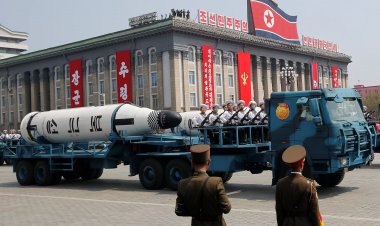Mr. Krishan Varma, China Specialist Reviews Frank Lehberger's Paper on China's Sinicization Policies Targeting Tibetan Buddhism

Review
By Krishan Varma
The Research Paper authored by Frank Lehberger, a sinologist with 30 years of valuable experience on the subject, vividly traces the historical, socio-political, ideological and strategic reasons underlying the rapid push of the CCP under Xi Jinping in 2020 to forcefully subjugate religious institutions of Tibetan Buddhism in “Chinese occupied Tibet”⸺ an increasingly used nomenclature by Western and South Asian analysts. It succinctly highlights the continuing attempts by the CCP to subject religious institutions of Tibetan Buddhism to legally assimilate with the majority Han population and gradually eliminate the religious social and cultural identity of the Tibetan people with the aim of “sinicizing” Tibetan Buddhism. It chronicles the blatantly repressive policies being implemented to achieve this goal.
The author forcefully argues that the trend has been accelerated under Xi’s leadership and is in sharp contrast to the ways similar policies were implemented under Mao and Deng. In this context, the author presents an incisive analysis of the “all-important 7th Tibet Work Forum” held on August 28-29 in 2020, the 7th such conclave held since 1980, a year after the reform and opening-up policy was enunciated by Deng. He highlights the underlying thread of all the Forums, considered by the author, as the highest policy-making body which has arrogated itself leadership over all Tibetans living in the PRC, referring to Tibetans as a “national minority”. He also alludes to the fact that almost all the representatives to the Tibet Work forum are non-Tibetans and that not even one of the representatives is an ethnic Tibetan or belongs to the Buddhist clergy!!
The author also analyses in detail eight out of the “10 musts” policy formulated by Xi Jinping to deal with minority nationalities in the PRC. These mainly deal with the sinicization of religion in China, managing religious affairs “in accordance with law”. It explains the concept of the “Chinese nation”. It also points out that a corollary of this definition is a push towards forced “Sinicization” of ethnic language education, although Xi subtly tries to present a more accommodative posture. Mandarin is forcefully being promoted as the main language of discourse.
The paper also provides a useful overview of CCP policies since 1950 highlighting the role of Mao, Deng, Jiang and Hu and their varying approaches to the issue of dealing with Tibet and Tibetan Buddhism. In contrast to their policies, he lucidly explains the “The Second Generation Ethnic Policies” which were evident in Hu Jintao’s hardline approach to Tibetan Buddhism in particular and sharpened during Xi Jinping’s terms at the helm. He quotes Xi Jinping saying in another clear reference to ‘Chinese Nation’ that “people of every ethnic group will come to identify with their proud motherland, the Chinese people, Chinese culture, the Chinese Communist Party and socialism with Chinese characteristics.” And, referring directly to Tibet, he once said: “It is necessary to dig out, sort out, and publicize the historical facts of the exchanges and integration of all ethnic groups in Tibet since ancient times, guide the people of all ethnic groups to see the direction and future of the nation, deeply realize that the Chinese Nation is a community of destiny, and promote exchanges and integration of all ethnic groups.”
The author quite masterfully brings out the definition of Tibetan Buddhism as it stood at the time of its inception to the distortions introduced in it through the history of the PRC, singling out the lone efforts made by Hu Yaobang in the early 1980s to try and preserve the unique nature of Tibetan ethnicity, language, culture and religious beliefs. He refers to Chinese leaders' efforts thereafter to adapt Tibetan Buddhism to an atheist socialist society.
The paper also throws light on the institutions of the Dalai Lama and the Panchen Lama and their interplay in Tibetan Buddhist precepts and practice. It cogently brings out the historical background on the “Tulkus”, their traditions and rituals relevant to the process of reincarnation and selection of the Dalai Lamas, and China’s blatant attempts to undermine them.
A reference is made on the One Belt One Road policy to highlight how this pet project of Xi Jinping, which has found its way to the CCP Constitution, subtly promotes the “ unification” of all minority nationalities. It would, however, have been worthwhile for the author to have spent some more time on connectivity projects across the PRC and beyond to provide his readership with a deeper insight on how China is “assimilating” its so-called minority nationality areas and simultaneously changing the demographics of the region. This is the “cultural genocide” many critics of Chinese policies refer to in their justification of Chinese expansionism and predomination of autonomous counties and prefectures.
The author forcefully concludes that Xi is building a cult and ‘communizing religions,” not only Tibetan Buddhism, but encompassing all 55 nationalities in the PRC.
The paper is both timely and a useful compendium of many historical facts and anecdotes which provide valuable insights into the complex nature of the Tibetan issue. It is no doubt an informative and insightful paper for a China-watching audience.
Read the Full paper, here.
Mr Krishan Varma, Member, Advisory Board of Usanas Foundation and former Special Secretary to the Government of India, Cabinet Secretariat






















